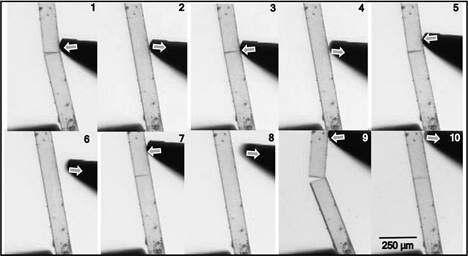sorcerer
New Member
- Joined
- Apr 13, 2013
- Messages
- 26,919
- Likes
- 98,474
Indian start-up makes affordable and dual powered defibrillator; sanmitra 1000hct
Posted On: 19 JUL 2021 4:55PM by PIB Delhi
*Low weight
* Can be used even in areas without electricity
* Does not require any battery change
* Can even prove fruitful in treating COVID-19 patients suffering from issues related to rate or rhythm of the heartbeat
* Ideal for city and remote area hospitals
* In-built generator provides the Device advantage over traditionaldefibrillator
* Receives four patents in India and United States
DBT-BIRAC-funded JeevtronicsPvt. Ltd. has developed SanMitra 1000 HCT, the hand-cranked dual powered (grid+hand cranked)defibrillator. The affordable, low-weight device is considered more reliable than traditional defibrillators by experts as it can be used even in the areas where electricity is unavailable.
The device works with both AC mains and a hand-cranked generator built into the unit, and does not require any battery change. The start-up has reported that the device’s battery has been tested for a large number of charge-discharge cycles therebymaking it cost-effective. The device is ideal for hospitals located in cities and remote areas. So far, over 200 devices have been deployed across India and Africa, as per the stats provided by the start-up.
Jeevtronics, an ISO13485 certified company, has already received four patents in US and India, and had been facilitated financially by BIRAC under the schemes of BIG and IIPME (Early Transition stage) in the past.SanMitra 1000 HCTis designed to international IEC standards for medical devices and the patented technology costs INR 99,999+ taxes, which is1/4th of the big brands, as reported by the start-up.These defibrillators can be usually preferred over chest compressions (CPR), and can even prove fruitful in treating COVID-19 patients suffering from issues related to rate or rhythm of the heartbeat (Arrythmias).
As per the start-up, they have also developed the only Make-In-India “ambulance grade” defibrillator, named as JeevtronicsSanMitra 1000 HCT EMS, which has been tested at ARAI and will be priced at fraction of the cost of MNC brands.
For Further Information: Contact Communication Cell of DBT/BIRAC
www.dbtindia.gov.in
www.birac.nic.in
About DBT
The Department of Biotechnology (DBT), under the Ministry of Science and Technology, promotes and improves biotechnology development in India through its development and implementation in agriculture, healthcare, animal sciences, the environment, and industry.
About BIRAC
A non-for-profit Public Sector Enterprise, Biotechnology Industry Research Assistance Council (BIRAC), has been set up by the Department of Biotechnology (DBT), Government of India, which acts as an interface agency to enhance and encourage the evolving biotechnology industry to implement strategic research and development activities in regards to the product development needs of the Nation.
Posted On: 19 JUL 2021 4:55PM by PIB Delhi
*Low weight
* Can be used even in areas without electricity
* Does not require any battery change
* Can even prove fruitful in treating COVID-19 patients suffering from issues related to rate or rhythm of the heartbeat
* Ideal for city and remote area hospitals
* In-built generator provides the Device advantage over traditionaldefibrillator
* Receives four patents in India and United States
DBT-BIRAC-funded JeevtronicsPvt. Ltd. has developed SanMitra 1000 HCT, the hand-cranked dual powered (grid+hand cranked)defibrillator. The affordable, low-weight device is considered more reliable than traditional defibrillators by experts as it can be used even in the areas where electricity is unavailable.
The device works with both AC mains and a hand-cranked generator built into the unit, and does not require any battery change. The start-up has reported that the device’s battery has been tested for a large number of charge-discharge cycles therebymaking it cost-effective. The device is ideal for hospitals located in cities and remote areas. So far, over 200 devices have been deployed across India and Africa, as per the stats provided by the start-up.
Jeevtronics, an ISO13485 certified company, has already received four patents in US and India, and had been facilitated financially by BIRAC under the schemes of BIG and IIPME (Early Transition stage) in the past.SanMitra 1000 HCTis designed to international IEC standards for medical devices and the patented technology costs INR 99,999+ taxes, which is1/4th of the big brands, as reported by the start-up.These defibrillators can be usually preferred over chest compressions (CPR), and can even prove fruitful in treating COVID-19 patients suffering from issues related to rate or rhythm of the heartbeat (Arrythmias).
As per the start-up, they have also developed the only Make-In-India “ambulance grade” defibrillator, named as JeevtronicsSanMitra 1000 HCT EMS, which has been tested at ARAI and will be priced at fraction of the cost of MNC brands.
For Further Information: Contact Communication Cell of DBT/BIRAC
- @DBTIndia@BIRAC_2012
www.dbtindia.gov.in
www.birac.nic.in
About DBT
The Department of Biotechnology (DBT), under the Ministry of Science and Technology, promotes and improves biotechnology development in India through its development and implementation in agriculture, healthcare, animal sciences, the environment, and industry.
About BIRAC
A non-for-profit Public Sector Enterprise, Biotechnology Industry Research Assistance Council (BIRAC), has been set up by the Department of Biotechnology (DBT), Government of India, which acts as an interface agency to enhance and encourage the evolving biotechnology industry to implement strategic research and development activities in regards to the product development needs of the Nation.


















